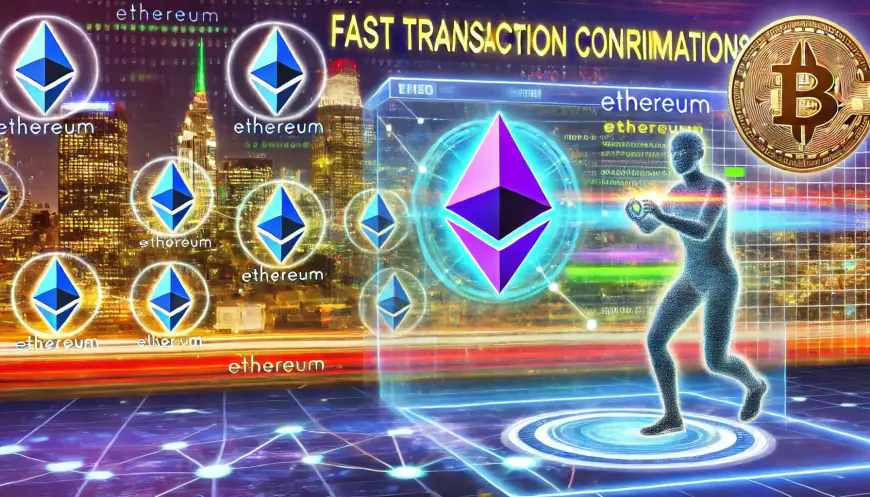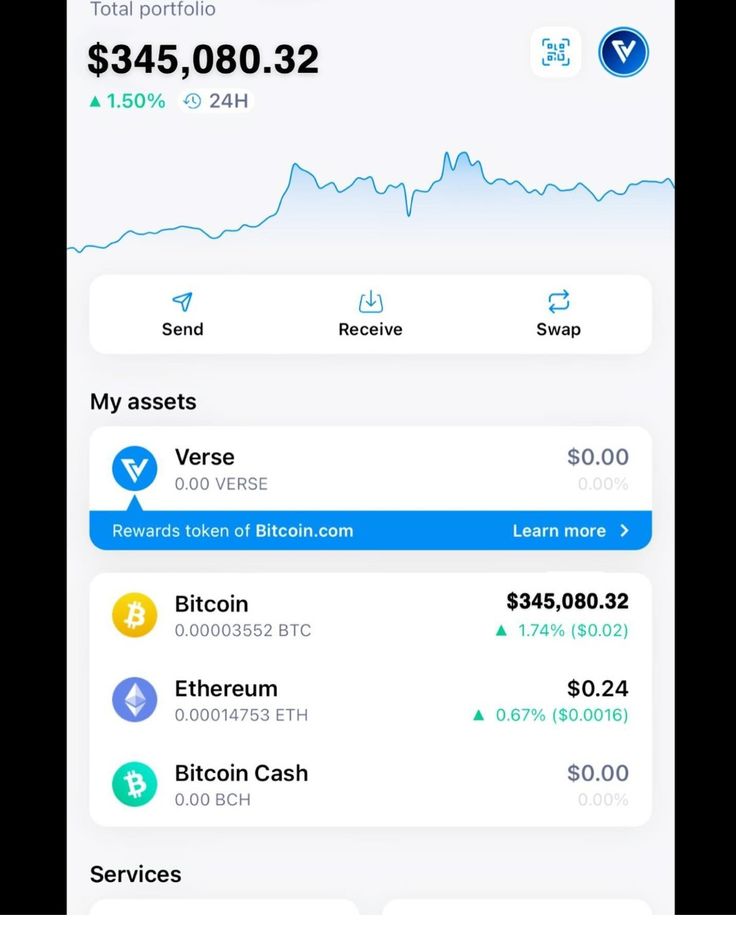Vitalik Buterin Seeks 100K Transaction Per Second With Ethereum’s Rollups
Vitalik Buterin Wants Ethereum to Hit 100K Transaction Per Second With Rollups, the largest cryptocurrency by market capitalization, experienced change in decentralized applications, decentralized finance, and non-fungible tokens. Despite this tremendous success, Ethereum was criticized early on for its poor scalability issues, which meant that it was often costly to process transactions and only slower than desired transaction processing times.
But he was also thinking about how to use rollups in order to almost take the transaction capacity of Ethereum to 100,000 TPS. What are rollups? How do they work? How can they change the horizon for Ethereum to make the target? Here’s everything you need to know about the problem of scalability for Ethereum:.
Scalability: Since its launch, one of the biggest concerns that Ethereum has had to overcome was scalability. It only supports 15–30 TPS. This is in comparison to tens of thousands of TPS in traditional financial systems, such as Visa. This has consequently led to:
High gas fees: The more congested the network is, the more money users have to pay to get their transactions processed faster.
Poor confirmation times: the more users, the slower the network, and hence longer periods of waiting for transactions to confirm
On the other hand, DeFi and NFT marketplaces based on Ethereum also mushroom with their increasing popularity. These problems only increase if Ethereum does not scale much higher to stay ahead in decentralized applications.
Vitalik Buterin’s Vision for 100K TPS
By 2021, Vitalik Buterin described a solution which can increase the number of transactions in Ethereum up to 100,000 TPS. And his vision is around rollups: one of the L2 scaling solutions where transactions are taken from the main Ethereum chain, grouped together, and returned to the main Ethereum blockchain on Layer 1 for finalization.
While still another scalability solution native to Ethereum 2.0, sharding is yet to kick in, Buterin is adamant that rollups are going to form the key part of Ethereum’s scaling strategy. According to Buterin, the rollups, which are actually feasible at present, can already take the TPS for Ethereum from 15-30 TPS to around 2,000-4,000 TPS and when collaborated with sharding, the TPS could reach 100K.
What Are Rollups? The Simple Explanation
Rollups is the second type of Layer 2 scaling solutions. Hundreds or thousands of transactions are “rolled up” into one single transaction that’s then processed on the Ethereum main net.
In rollups, the off-chain primary computation and data processing occur, while the final state or proof of transactions is submitted to the main blockchain of Ethereum. This way reduces the burden on Ethereum while securing transactions through Ethereum’s Proof of Stake consensus mechanism.

There are two types of rollups: Optimistic Rollups and ZK-Rollups
There are two types of rollups that are currently being developed: Optimistic Rollups and Zero-Knowledge Rollups, or ZK-Rollups. Each type has its pluses and minuses.
- Optimistic Rollups
Optimistic rollups take an assumption—that the transactions are valid by default—and check the computation only when a person challenges the validity of the transaction; it reverts the state if necessary. It is considered optimistic because no fraudulent transaction will be processed.
Advantages: Optimistic rollups are generally more flexible and easier on smart contracts; they are therefore better for DApps.
Disadvantages: They necessarily require a challenge period, usually of 7 days, within which withdrawals and finality would be postponed.
- Zero-Knowledge Rollups
ZK-Rollups only rely on zero-knowledge proofs to attest that every transaction within a batch is valid. ZK-rollups derive a cryptographic proof that really transactions are correct and therefore allow nearly instant finality and verification on the main chain of Ethereum.
Benefits: It assures more rapid finality, more fraud risk reductions, and more security guarantees.
The major drawback of the generation of zero-knowledge proofs is that they are more computationally intensive, which discourages the execution of complex smart contracts. More!
Why Rollups Could Make It to 100K TPS for Ethereum
In the words of Vitalik Buterin, rollups could make it to 100,000 TPS for Ethereum. The idea behind this boosts up the capacity of the network exponentially. Here’s how rollups do that:
- Layer 2 Processing: Rollups basically enable most of the computations about the transactions off the chain. The total computational work load is therefore much lesser on the main chain of the network Ethereum.
- Data Compression: Rollups compress data that needs presentation to the Ethereum network and ensure that the actual amount of data processed on-chain is minimal. Several transactions can thus be settled without consuming Layer 1’s capacity intensely.
- Shards rollups: Sharding should be the future constituent of Ethereum 2.0. In simple terms, the main Ethereum network will break up into multiple smaller “shards” that can conduct transactions in parallel. Meanwhile, sharding combined with rollups would probably make Ethereum a highly scalable system.
Rollups do ensure faster finality of transactions-a point in time where parties to a transaction cannot undo their transaction, which is better than the current Proof of Work mechanism of Ethereum. If Ethereum goes completely for the Proof of Stake model, rollups would be able to take advantage of the newer, secure network and higher velocity of consensus towards improving throughput.

Live Projects Using Rollups
A few projects and solutions have rolled out rollups to battle the problem of scalability in the network of Ethereum. Among the more prominent projects that initiated a rollout are the following:
- Optimism: It is one of the Layer 2 solutions where Optimistic Rollup is implemented. Many large projects of DeFi, including Uniswap and Synthetix, have started using Optimism and reducing the transaction costs while assuring the security of Ethereum.
- Arbitrum: This is yet another project majorly implementing Optimistic Rollups, which caught people’s attentions because you could scale the DApps of Ethereum with minimal changes on the developer’s sides.
- zkRollup is a ZK-Rollup project serving to scale Ethereum, offering nearly instant finality of transactions. zkRollup is under development for use in DeFi applications and also NFT marketplaces.
- Loopring,: one of the very early implementations of ZK-Rollups, focuses on DEXs in an attempt to offer significantly cheaper and faster trades than ethically comparable solutions but still with the security of Ethereum.
These projects already do great strides towards scaling Ethereum, and as the technology in rollups matures, they could push Ethereum closer to the goal of 100k TPS.
Challenges and Criticisms of Rollups
Despite all this potential, rollups have some challenges and criticism that needs to be covered:
Security: Rollups inherit the security model of Ethereum, but the same bugs and exploits in smart contracts that rollups operate upon remain a concern. Scaling such systems up securely poses an important problem.
Complexity: Rollups add a further complexity to the Ethereum system. This will make it harder still for people to build on the platform, but there are potential workarounds such as optimism and others that are in the pipeline.
Interoperability: Rollups can be treated as other ecosystems; therefore, asset or data transfer between different rollups and Layer 1 is a hassle and expensive. Developers are working on cross-rollup solutions; however, that is still an area of concern to achieve mass adoption.
Cost: Rollups are cost-saving more in comparison to Layer 1 but cost-intensive, particularly regarding sending data to the core Ethereum chain. For instance, case ZK-Rollup creation of zero-knowledge proofs is computationally expensive.

Ethereum’s Roadmap: Beyond Rollups
That’s not the end to the vision of Vitalik Buterin, though. Rollups will have company in the launch of Ethereum 2.0, which is fully deployed next year in 2024 and will bring forth features like sharding that complement rollups and improve the capacity of the network. In the end, the vision of Ethereum will be to develop a decentralized, scalable platform for such future applications on blockchain.
This roadmap for Ethereum beyond rollups would encompass:
Proof of Stake (PoS) Migration: At this point, the energy consumption for Ethereum’s network would drastically reduce and increase in scalability when it migrated from a proof of work model to proof of stake.
Sharding: Eventually, when sharding is fully activated, it would break down the network into 64 parallel chains that enhance throughput to help lower congestion.
Ecosystem Impact on Ethereum: DeFi, NFTs, DApps
Now, if Ethereum is able to roll up to 100K TPS, the effect it can generate within its ecosystem can be transformative.
DeFi: Vitalik Buterin Wants Ethereum to Hit 100K Transaction Per Second With Rollups
If high fees and slow transaction times are those that DeFi platforms are experiencing today, rollups might make it easier for average users to access.
NFTs:
The infamous congestional market of NFTs may scale better with rollups, meaning creators as well as collectors can mint, buy, and sell NFTs without high costs.
DApps:
The higher TPS rate means developers could create more sophisticated and scalable decentralized applications with more new users and use cases on Ethereum.
Frequently Asked Questions (FAQs)
1. What are the rollups in Ethereum?
A Layer 2 solution that processes transactions off-chain and submits them to the main Ethereum network in a compressed format to reduce congestion and increase transaction throughput.
2. How do rollups enhance Ethereum?
Rollups decrease the amount of required data, and it does so in a fashion that inherently expands the number of transactions that Ethereum can settle by letting some transactions be executed off-chain but bundling all those transactions up and submitting them for inclusion on the main Ethereum chain.
3. In what ways are optimistic rollups distinct from ZK-rollups?
While Optimistic Rollups rely on the assumption that, by default, all transactions are valid and fraud only requires backchecking, ZK-Rollups will use cryptography proofs to confirm all transactions, which then will be relayed to the Ethereum network.
4. Do rollups get Ethereum up to 100K TPS?
As per Ethereum co-founder Vitalik Buterin, rollups combined with shading in Ethereum 2.0 will bring the processing of Ethereum up to about 100,000 transactions per second, as its scalability is going to be highly high-performance.
5. What projects use rollups?
Some of the popular projects using rollups include Optimism, Arbitrum, zkSync, and Loopring. It is already helping Ethereum scale as it minimizes the cost and brings in fast transaction rates.
Conclusion: Vitalik Buterin Wants Ethereum to Hit 100K Transaction Per Second With Rollups
This shall be a radical, fantastic vision by Vitalik Buterin to reach 100K TPS of Ethereum with the help of rollups. Rollup technology development will continue with the intention and implementation of sharding into Ethereum 2.0 in due course to make it overcome its scalability challenges and remain dominantly in the blockchain space. More!
3 thoughts on “Vitalik Buterin Wants Ethereum to Hit 100K Transaction Per Second With Rollups”